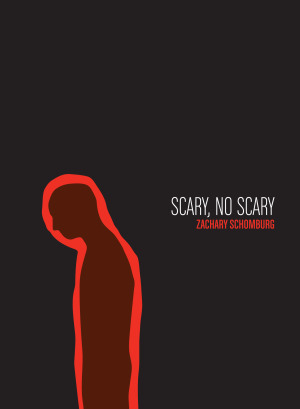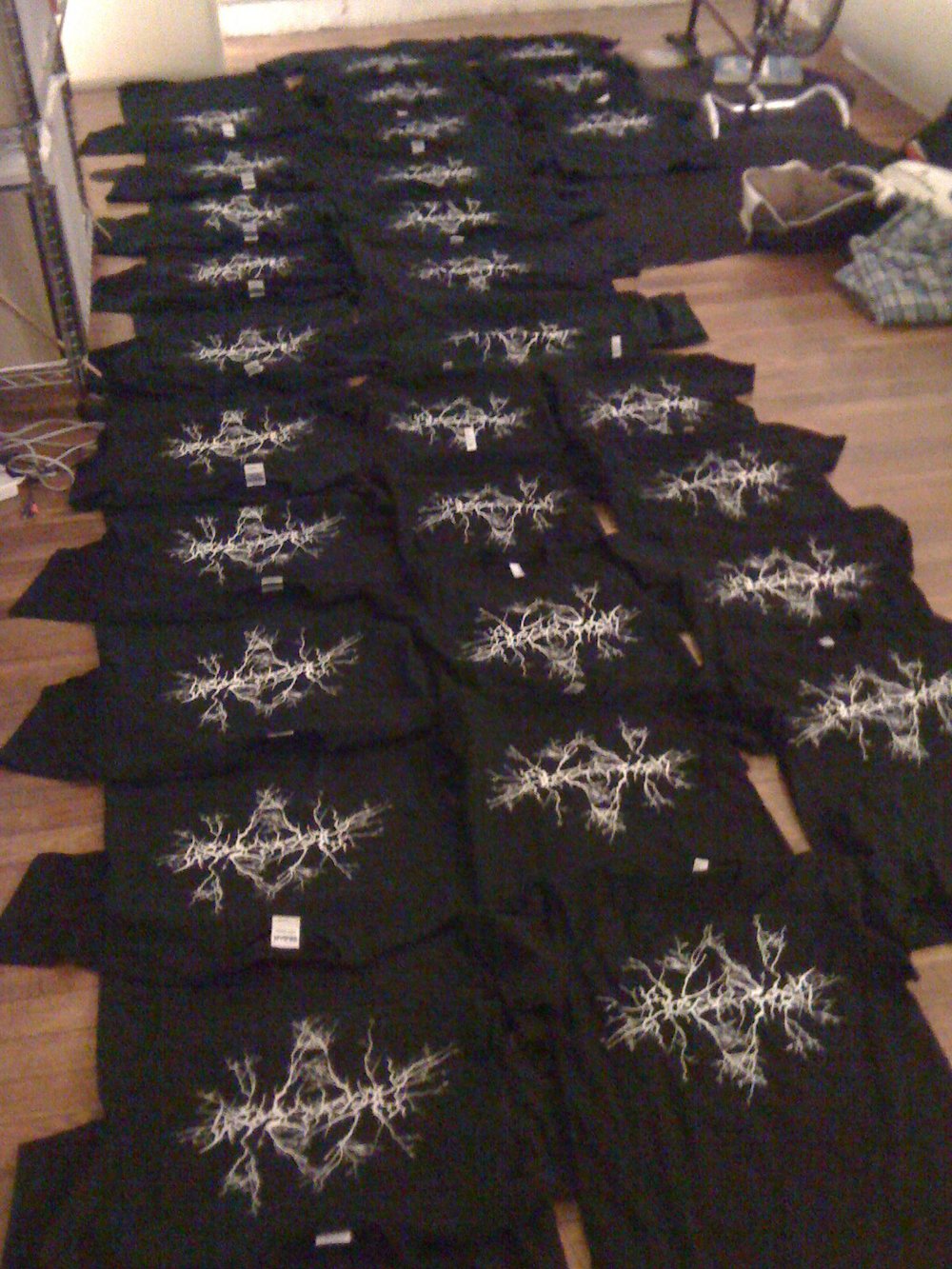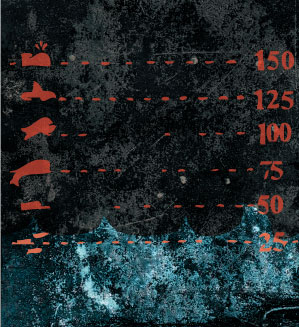Managing Editor A. Minetta Gould interviews three Creative Writing instructors about choosing Black Ocean books for their classrooms. All work at Boise State University where Minetta herself taught for three years.
Genevieve Kohlhardt was raised in Colorado but lives in Idaho, where she's getting her MFA in Poetry and teaching creative writing classes. You can find her work in H_NGM_N and Strange Machine.
Adrian Kien lives and teaches in Boise, ID. He is the author of Who is There (Blazevox), and the chapbooks An Anatomy Lesson (translations of Christian Prigent, Free Poetry) and The Caress Is a Letter of Instruction (Strange Machine).
Charles Gabel is the author of the chapbook Pastoral. He studied classics at Loyola University Chicago and currently studies poetry at Boise State University.
AMG: What Black Ocean titles have you taught? What was most successful? What posed the biggest challenge?
GK: I've taught Zachary Schomburg's Scary, No Scary and Julie Doxsee's Objects for a Fog Death. I'll be teaching Matthew Henrikson's Ordinary Sun later this semester. I'd say both were really successful, but my students were really quick to get into Schomburg. Doxsee's book took a little more discussion to get them into because the language is much less direct. But with a little bit of discussion they were really turned on by it.
AK: Scary, No Scary. The Man Suit. With Deer.
I will be teaching Destroyer of Man later in the semester.
Schomburg's work has been a joy to teach because it seems to open students up to the possibilities of being weird. It's a fairly safe level of weirdness and humor and sincerity. The students love it. They get it and feel confident that poetry is something they can do too. It's a lot like looking at a Mark Ryden painting. On the surface its cute, but then you see all the blood.
With Deer proves a bit more challenging for students. The imagery is disturbing. The language is strange, part foreign, part translated. With Deer seems to push the students who want to learn and scare away the students who are lazy or weak kneed. Aesthetically, I love With Deer. And it is probably my enthusiasm that helps carry the conversation. The book is terrific for conversations about the mutability of language, sound and translation. Harriet Mullen's Sleeping with the Dictionary is a nice complement to this book.
CG: I taught With Deer in Fall 2010, The Man Suit in Spring 2011, and Ordinary Sun just a few weeks ago in Fall 2011. All three have been successful, though With Deer posed a challenge, largely due to its brutal content. It's a book that, I think, scared some students. Through that, however, we were able to investigate an alternative view of nature and how it might appear in poetry. In class we applied more traditional versions of nature in poetry to the book, working with how Berg both demonstrated and pulled away from those conventions.
AMG: Do you think you were attracted to teaching these texts for a reason? Did your initial reasons become the reasons for the class?
GK: Really, I think my initial reason's for choosing those books is that I really enjoyed them, and wanted to talk about them. Although with Schomburg it also had to do with how easy/difficult that text is simultaneously. It's written in language they understand, they see the images no problem, so the language doesn't impede discussion on what the function of the image might be. Plus, it turned me on to write differently (as did Doxsee) so I was hoping it would have the same effect on them.
AK: To be honest, I can't remember how BO got on my radar. But yes, I would say that it's a general aesthetic. The only analogy I can think of is with music. There are certain labels that you like - Alternative Tentacles, Mute, Matador . . . . The press hosts a variety of authors and aesthetics but they seem unified in their vision. The titles seem fresh and young. I think it is this that I hope students take from the books. The books are smart but don't seem necessarily pretentious.
CG: I was originally drawn to With Deer because of its kind of intensity and imagery as well as being a work in translation. It was of a style that I thought would give a greater variety of language and image in the contemporary—it's an extreme that doesn't exist in American poetry. I wanted to give them a much broader picture of what was going on. I had expected the nature-oriented conversations to happen, but in the classroom that became the main focus somewhat unexpectedly.
I was drawn to teach The Man Suit for a lot of the reasons it was successful--to open up students to something that doesn't look like their original conception of poetry. It's accessible without being easily explained and it focuses students on what the poems' craft elements (language and image) largely because they're not available for a decoding.
I selected Ordinary Sun in order to present the students with a type of poetry that feels contemporary but in a lot of ways still looks like the typical conception of a poem and carries through an older tradition, particularly the Romantics. It was meant to be something of a bridge into the now. This carried through extremely well. Also, while the book has these very clear ambitions, it's simply a book of beautiful poems that do a lot of different things from poem to poem while all being essential to the overall work and retaining the voice of the book.
AMG: How did reading teaching these texts influence your student's writing/way of thinking about poetry?
GK: Schomburg is a good poet for "breaking" them—so to speak. Both times I've shown my students Schomburg poems, they are immediately willing to abandon their tendencies to write "deep" poetry, and actually start writing deep poetry using imagery and creating worlds within their poems. It has also helped them identify paradox—in the way the book is simultaneously funny and tragic.
Doxsee's effect has been more subtle, I think. When I taught her book, we worked on picking up repeated ideas and themes in a series of poems and looking at how those work in multiple poems. It definitely allowed my students to be okay with saying things that made "no sense" and see that there is a kind of sense developed in the difficult.
AK: My above comments kind of answer this, but I think Schomburg really helps students start writing with imagery instead of writing about their feelings or rehashing song lyrics.
CG: Both The Man Suit and Ordinary Sun turned out to be breakthrough moments for my students as writers and readers of poetry. Both books opened up a lot of what their conceptions of poetry could do while being inviting rather than confrontational to beginning students. The Man Suit gave them a sense that poetry didn't have to contain itself within that poetry box they seem to come in with—students don't feel the need to mean in a way that usually trips them up.
Ordinary Sun has been a little different. The book presented the students with something that looks and feels contemporary, but carries all the notions of what students expect from poetry. It seems to walk and talk like poems they've seen before, but there's something new going on; it nudges against a lot of notions of poetry's stuffiness. At the same time it took old concepts and poetics of the Romantics and brought them into an approachable context. The book carries with it a deep poetic tradition while sounding new, which I've found to be essential in opening up students to approaching poetry.
___________
There is also a personable atmosphere surrounding our authors—they actively work toward helping young readers find a space in their books. In Boise alone, Julie Doxsee skyped into Genevieve’s classroom (all the way from Turkey), Zachary gave a reading in Adrian’s back yard, and Matthew is about to give a Skype reading (four different introductory and intermediate classes have been working with Ordinary Sun). Being able to interact with a poet while reading their work inherently shapes a new, deeper understanding of how the poems are alive, how they came to live, and how someone new to poetry can begin to live with poetry inside themselves.
We at Black Ocean would love to hear about your interactions in the classroom with our titles—both as educators and as students. Write about your experiences in the comment field below.
If you’re interested in teaching a Black Ocean title please contact A. Minetta for a desk copy (minetta@blackocean.org).













